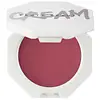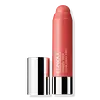What's inside
What's inside
 Key Ingredients
Key Ingredients

 Benefits
Benefits

 Concerns
Concerns

 Ingredients Side-by-side
Ingredients Side-by-side

Octyldodecanol
EmollientIsononyl Isononanoate
EmollientDicalcium Phosphate
AbrasiveSynthetic Fluorphlogopite
Caprylic/Capric Triglyceride
MaskingPentaerythrityl Tetraisostearate
EmollientSynthetic Wax
AbrasiveBis-Diglyceryl Polyacyladipate-2
EmollientSilica Silylate
EmollientPolyethylene
AbrasiveNylon-12
Candelilla Cera
EmollientDisteardimonium Hectorite
StabilisingTocopheryl Acetate
AntioxidantPentaerythrityl Tetra-Di-T-Butyl Hydroxyhydrocinnamate
AntioxidantTin Oxide
AbrasiveCI 15850
Cosmetic ColorantCI 42090
Cosmetic ColorantIron Oxides
CI 77891
Cosmetic ColorantOctyldodecanol, Isononyl Isononanoate, Dicalcium Phosphate, Synthetic Fluorphlogopite, Caprylic/Capric Triglyceride, Pentaerythrityl Tetraisostearate, Synthetic Wax, Bis-Diglyceryl Polyacyladipate-2, Silica Silylate, Polyethylene, Nylon-12, Candelilla Cera, Disteardimonium Hectorite, Tocopheryl Acetate, Pentaerythrityl Tetra-Di-T-Butyl Hydroxyhydrocinnamate, Tin Oxide, CI 15850, CI 42090, Iron Oxides, CI 77891
Isodecyl Isononanoate
EmollientPolyethylene
AbrasivePropylene Glycol Dicaprylate/Dicaprate
EmollientHdi/Trimethylol Hexyllactone Crosspolymer
Euphorbia Cerifera Wax
Bis-Diglyceryl Polyacyladipate-2
EmollientDiisopropyl Dimer Dilinoleate
EmollientOzokerite
Emulsion StabilisingSqualane
EmollientCeresin
Emulsion StabilisingHydrogenated Polyisobutene
EmollientSilica
AbrasiveOctyldodecanol
EmollientPhytosteryl Isostearate
Skin ConditioningOryzanol
Skin ConditioningTocopheryl Acetate
AntioxidantLauroyl Lysine
Skin ConditioningLecithin
EmollientSynthetic Beeswax
Emulsion StabilisingLauryl PCA
HumectantCaprylyl Glycol
EmollientEthylene/Propylene/Styrene Copolymer
Propylene Carbonate
SolventDisteardimonium Hectorite
StabilisingTin Oxide
AbrasiveButylene/Ethylene/Styrene Copolymer
Alumina
AbrasiveSynthetic Fluorphlogopite
Mica
Cosmetic ColorantCI 77891
Cosmetic ColorantCI 77491
Cosmetic ColorantCI 77492
Cosmetic ColorantCI 77499
Cosmetic ColorantCI 15850
Cosmetic ColorantCI 19140
Cosmetic ColorantCI 42090
Cosmetic ColorantCI 75470
Cosmetic ColorantCI 77742
Cosmetic ColorantCI 77510
Cosmetic ColorantCI 45380
Cosmetic ColorantCI 73360
Cosmetic ColorantCI 77288
Cosmetic ColorantCI 77289
Cosmetic ColorantCI 77163
Cosmetic ColorantCI 77007
Cosmetic ColorantCI 17200
Cosmetic ColorantCI 45410
Cosmetic ColorantCI 15985
Cosmetic ColorantIsodecyl Isononanoate, Polyethylene, Propylene Glycol Dicaprylate/Dicaprate, Hdi/Trimethylol Hexyllactone Crosspolymer, Euphorbia Cerifera Wax, Bis-Diglyceryl Polyacyladipate-2, Diisopropyl Dimer Dilinoleate, Ozokerite, Squalane, Ceresin, Hydrogenated Polyisobutene, Silica, Octyldodecanol, Phytosteryl Isostearate, Oryzanol, Tocopheryl Acetate, Lauroyl Lysine, Lecithin, Synthetic Beeswax, Lauryl PCA, Caprylyl Glycol, Ethylene/Propylene/Styrene Copolymer, Propylene Carbonate, Disteardimonium Hectorite, Tin Oxide, Butylene/Ethylene/Styrene Copolymer, Alumina, Synthetic Fluorphlogopite, Mica, CI 77891, CI 77491, CI 77492, CI 77499, CI 15850, CI 19140, CI 42090, CI 75470, CI 77742, CI 77510, CI 45380, CI 73360, CI 77288, CI 77289, CI 77163, CI 77007, CI 17200, CI 45410, CI 15985
 Reviews
Reviews

Ingredients Explained
These ingredients are found in both products.
Ingredients higher up in an ingredient list are typically present in a larger amount.
This ingredient is lipid-based synthetic skin-conditioning agent derived from adipic acid and a mixture of fatty acids. It is often called a lanolin substitute.
As an emollient, it helps soften and hydrate the skin. Emollients create a barrier on the skin to trap moisture in.
Due to its fatty acid base, it may not be Malassezia folliculitis safe.
Learn more about Bis-Diglyceryl Polyacyladipate-2Ci 15850 is the pigment color red. It is an azo dye and created synthetically.
Azo dyes need to be thoroughly purified before use. This allows them to be more stable and longer-lasting.
This ingredient is common in foundations, lipsticks, and blushes. This color is described as brown/orangey red.
It has many secondary names such as Red 6 and Red 7. According to a manufacturer, Red 6 usually contains aluminum.
Learn more about CI 15850Ci 42090 is a synthetic dye created from petroleum. It is used to give a bright blue color to cosmetics, medicine, and food.
Ci 77891 is a white pigment from Titanium dioxide. It is naturally found in minerals such as rutile and ilmenite.
It's main function is to add a white color to cosmetics. It can also be mixed with other colors to create different shades.
Ci 77891 is commonly found in sunscreens due to its ability to block UV rays.
Learn more about CI 77891Disteardimonium Hectorite comes from the clay mineral named hectorite. It is used to add thickness to a product.
It can also help stabilize a product by helping to disperse other ingredients.
Hectorite is a rare, white clay mineral.
Learn more about Disteardimonium HectoriteOctyldodecanol is a fatty alcohol. It is primarily used to enhance the texture of products.
As an emulsifier, Octyldodecanol helps prevent the oils and waters from separating. It also prevents ingredients from creating foam when shaken.
Octyldodecanol is created by reducing fatty acid to an alcohol.
Due to its high molecular weight, it does not get absorbed into the skin.
Learn more about OctyldodecanolPolyethylene is a synthetic ingredient that helps the skin retain moisture. It is a polymer.
It is also typically used within product formulations to help bind solid ingredients together and thicken oil-based ingredients. When added to balms and emulsions, it helps increase the melting point temperature.
Synthetic Fluorphlogopite is the synthethic version of mica. It consists of fluorine, aluminum and silicate.
Synthetic Fluorphlogopite is used to add volume to products.
It is considered non-irritating on the skin.
Learn more about Synthetic FluorphlogopiteTin Oxide is an inorganic oxide used to add opacity and volume to a product. In nature, it is already found in mineral form. The main ore of tin is an opaque and shiny mineral called casseterite.
Tin Oxide helps remove translucency in a product, or make it more opaque. Besides adding opacity, tin oxide is used for bulking to add volume.
Tocopheryl Acetate is AKA Vitamin E. It is an antioxidant and protects your skin from free radicals. Free radicals damage the skin by breaking down collagen.
One study found using Tocopheryl Acetate with Vitamin C decreased the number of sunburned cells.
Tocopheryl Acetate is commonly found in both skincare and dietary supplements.
Learn more about Tocopheryl Acetate